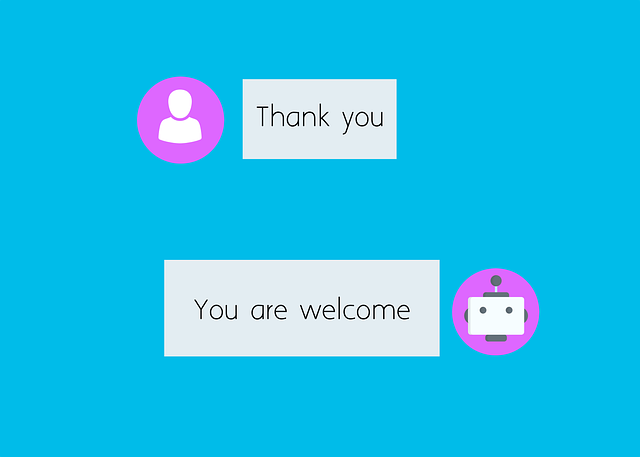In a crowded e-commerce market, AI-driven chatbots offer businesses an effective strategy for lead generation by providing personalized customer experiences. These virtual assistants leverage NLP to understand user needs, guide purchases, and boost satisfaction, driving up conversion rates. Continuous optimization based on key metrics is crucial for successful chatbot implementations, ensuring they adapt to evolving user behaviors in the competitive digital landscape.
In the dynamic landscape of e-commerce, lead generation is a cornerstone of growth. However, navigating a saturated market with traditional methods can be challenging. This article explores how AI chatbots emerge as a revolutionary solution, offering innovative approaches to enhancing customer engagement and driving sales. We delve into the benefits, integration strategies, and optimization techniques for these advanced tools, specifically focusing on ecommerce chatbot applications that deliver tangible results.
- Understanding Lead Generation Challenges in Ecommerce
- The Rise of AI Chatbots as a Solution for Businesses
- Integrating Chatbots into Your Ecommerce Strategy
- Measuring Success and Optimizing Chatbot Performance
Understanding Lead Generation Challenges in Ecommerce

In the fast-paced world of ecommerce, lead generation is a constant challenge for businesses aiming to stay competitive. The digital landscape is crowded, making it increasingly difficult for brands to capture attention and convert visitors into potential customers. Traditional methods like email marketing and social media campaigns often face saturation, leading to lower engagement rates. This presents a significant hurdle for ecommerce businesses striving to expand their customer base.
Ecommerce chatbots offer a novel solution by providing personalized interactions that cater to individual shopper needs. By leveraging AI technology, these chatbots can actively engage customers, answer queries, and guide them through the purchase process—all while collecting valuable data to refine future marketing strategies. This dynamic approach enhances user experiences, increases conversion rates, and ultimately drives sustainable lead generation for online retailers.
The Rise of AI Chatbots as a Solution for Businesses

In today’s digital age, businesses are constantly seeking innovative methods to enhance their marketing strategies and stay ahead of the competition. Among the many advancements in artificial intelligence (AI), chatbots have emerged as a powerful tool for lead generation, especially in the realm of ecommerce. These intelligent virtual assistants offer a unique and personalized customer experience, which is essential for engaging modern consumers. With the ability to provide instant support, answer queries, and guide users through the purchasing process, AI chatbots are revolutionizing the way businesses interact with their customers.
Ecommerce chatbot implementations have seen significant growth due to their versatility and effectiveness. They can be integrated into various platforms, from websites to messaging apps, ensuring a seamless interaction for online shoppers. By leveraging natural language processing (NLP), these chatbots understand user intent, deliver relevant product recommendations, and even handle post-purchase follow-ups. This not only improves customer satisfaction but also increases the chances of conversions and repeat business, making them an indispensable asset for any modern business looking to thrive in the competitive online market.
Integrating Chatbots into Your Ecommerce Strategy

Integrating chatbots into your ecommerce strategy can significantly enhance customer engagement and drive lead generation. These AI-powered tools offer 24/7 availability, enabling instant interactions with potential buyers, which is crucial in today’s fast-paced digital landscape. By deploying an ecommerce chatbot on your website, you can provide immediate product recommendations, answer frequently asked questions, and even facilitate simple transactions, thereby increasing conversion rates.
Chatbots can also collect valuable customer data during these interactions, allowing for more personalized marketing campaigns. This level of customization helps in building stronger relationships with clients, fostering brand loyalty, and ultimately driving repeat purchases. With the ability to handle a high volume of customer inquiries simultaneously, chatbots free up human agents to focus on complex issues, ensuring a more efficient and effective support system.
Measuring Success and Optimizing Chatbot Performance

Measuring success and optimizing chatbot performance are essential aspects of deploying an AI chatbot for lead generation, especially in the competitive landscape of ecommerce. Key metrics such as conversion rates, message engagement, and customer satisfaction scores provide valuable insights into the effectiveness of the chatbot. By analyzing these data points, businesses can identify areas where the chatbot excels or falls short. For instance, a high conversion rate indicates that the chatbot is successfully guiding prospects towards desired actions, like making a purchase or signing up for newsletters.
To optimize performance, regular fine-tuning and testing are crucial. This involves refining conversational flows based on user feedback, updating knowledge bases to include the latest product information, and implementing machine learning algorithms that adapt to user behaviors. Continuous monitoring ensures the chatbot remains not just functional but also dynamic, effectively engaging and converting leads into loyal customers in the competitive ecommerce arena.
AI chatbots are transforming the way businesses approach lead generation in the competitive world of e-commerce. By understanding customer needs, providing personalized interactions, and streamlining communication, these chatbots offer a powerful tool for engaging prospects and driving conversions. As technology advances, integrating an ecommerce chatbot into your strategy can help you stay ahead of the curve, offering a seamless and efficient user experience that leaves a lasting impression.
